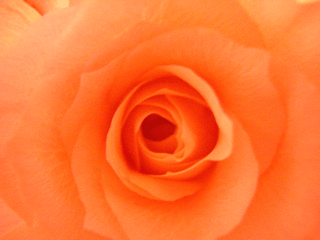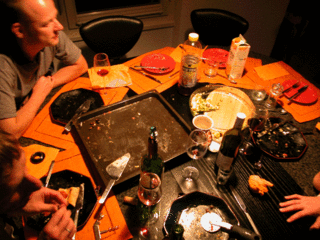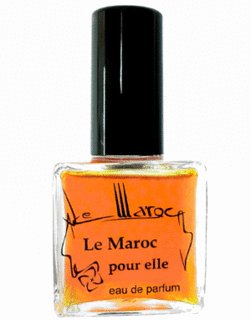Lonestar Memories: Colombina on Perfumesmellingthings.
(...)Lonestar Memories makes me want to escape the mundane confines of my everyday world(...)
Lonestar Memories: Katie on Scentzilla.
(...) Lonestar Memories smells of the examined life.
Inside there is joy, and there is tiny heartbreak, e
xisting only in reverie. The scent unravels into
the consideration of past experiences, and pinings for future joys and heartbreaks(...)
Lonestar Memories: Marlen Harrison's review on PerfumeCritic.com
(...)
If you're a lover of leather or richer wood fragrances,
this is gonna be a holy grail scent and in that case, better get two bottles.(...)
Lonestar Memories: Cait Shortell's review on Legerdenez.
(...)
Do you appreciate scent because you identify with the scent and
its image? Does a scent have the ability to create a memory outside one’s own experience?(...)
Wednesday, August 31, 2005
Just back from a 2.5 day strategy and network meeting on the Peters Island (close to Biel).
Monday, August 29, 2005
Marketing diner and more

Perfumery is a lot about anything else than actually creating perfumes. But there is a fun part to this, too, like having diner. The marketing diner with Pascal on Friday evening was very nice and professional. I wanted to talk to him outside of his shop to have time to think. We were thinking and eating, starting with a wrap-up of the impact that the free publication in Annabelle had (see picture, upper left corner), and what we want to get done in terms of marketing.
We still hope to get more into the news (lucky Eie Flud with the BBC4 broadcast!) and we have some ideas that we will follow in the next weeks and months. The highlight being a scent apéro: We will present our two perfumes in the context of the natura scents from Morocco that form it, at least partially. Meaning: We will present the rose absolue, the jasmin, the petitgrain, the cedarwood, .... as individual scents and give the customers the possibility to find out the individual traits in the composition. At this event, I will have the opportunity to talk a little bit about perfumery and the perfume lovers may find a deeper insight into the perfume "Le maroc pour elle" . I love this idea. This late afternoon apéro will also be the ideal opportunity to present "l'air du désert marocain" to a broad public. I am already now getting nervous, trembling hands,...
Sunday, August 28, 2005
scents and reproductive state
 Science is great stuff and now we seem to have proof that women have quite different smelling sensitivities depending on their reproductive state. A study has shown that women smell androstadienone (a scent found in the sweat of men) much better while being in fertile state, on the other hand they had much higher sensitivity for rose scent while being in infertile state.
Science is great stuff and now we seem to have proof that women have quite different smelling sensitivities depending on their reproductive state. A study has shown that women smell androstadienone (a scent found in the sweat of men) much better while being in fertile state, on the other hand they had much higher sensitivity for rose scent while being in infertile state.
Which makes sense: In hunt for the brave partner and co-creator of your future babies you need to be sensitive for man scent. Once this job of yours is done and finished, you may care for flowers and food....
Unfortunately, the study's abstract makes no indication on the selectivity of men's noses and it does not really indicate whether women like the scent of androstadienone....
Study by: Johan N. Lundströma, b , Martha K. McClintockb and Mats J. Olssona
aDepartment of Psychology, Uppsala University, Box 1225, SE-75142 Uppsala, Sweden
bInstitute for Mind and Biology, University of Chicago, Chicago, 940 57th Street, 60637, IL, USA
Pizza and intuition
 3 hours in the kitchen, half an hour on the table. The fate of every cook. I like to cook and we had my brother's family over for diner with all children being Yelena, Alessia, Sinja and Naomi.
3 hours in the kitchen, half an hour on the table. The fate of every cook. I like to cook and we had my brother's family over for diner with all children being Yelena, Alessia, Sinja and Naomi.
While preparing the pizza dough and fooling around with bacon, salad, crème fraiche and all the other yummy ingredients for desert such as Swiss chocolate and cream for the sweet highlight of the evening, I was wondering about perfumers and cooks.
We have something in common, starting from single yet not simple ingredients, building up a blend, having it transformed by time and heat and finally have it ready and present it in a nice fashionable way to a happy consumer who has no idea what happened in the kitchen. And similar to cooking, a perfumer will have to feel how the individual ingredients fit together, how they transform each other and how time will work on the blend. There is, however, a difference: A pizza comes out of the oven, is ready to be eaten and finished within half an hour. A perfume is a pice of craftmanship which will develop over hours; every note you added will have an impact over time. In perfumery these are the challenges:
- To intuitively know how components will fit; this is experience.
- How they will develop while the maturation of the perfume before dilution; this is knowhow.
- How the final blend will develop once liberated on the skin with all factors such as humidity, body chemistry, body warmth coming into play; this is the intuition part.
Preparing pizza is easier.
(picture upper left: my brother. lower left: my friend. wine: Cour du Roy, Médoc, 2001)
Thursday, August 25, 2005
Flacon fight

Finding nice flacons for perfumes is a fight. You go through hundreds of links and browse catalogues until you finaly find the one, the perfect bottle which entirely reflects your idea for the perfume you created. Getting then the bottles is an endeavour sometimes approaching the scope of a return journey to the moon, but with less thrill and return for mankind...
Being a niche perfumer (microperfumer so to say) I will not buy bottles by the thousands. Thus, I am not really interesting for bottle selling companies. A fact they let you feel quite directly.
Since two months I am waiting for the remaining delivery of the bottles for l'air du désert marocain. At least, I got some bottles to bring the perfume into the shop, but once it starts selling...
Who knows trustworthy, , reliable companies, selling lots of different perfume bottles in lots of hundreds, please tell me, I will appreciate...
Wednesday, August 24, 2005
times go by

On the way to the dentist scheduled for 8, then heading on to work, where I have to worked faster to cope with the missed hours. Not much time left for creativity on perfumery. The picture of the candle should remind me to really think about the coming Christmas season.....
As always, there is not enough time in life for the real fun things, the endeavours you really enjoy. Maybe there is some moment of clear thought on the dentist's chair... but tomorrow evening at least there will be a moment reserved for perfumery: Dinner with Pascal who owns the shop selling my two "public" perfumes. Doing some thinking about marketing and how to proceed. That's a highlight to think on while brushing the teath..
Tuesday, August 23, 2005
Naturals and synthetics
Heather asked in her comment to an earlier post about where I use naturals and synthetics and how an all natural perfume would compare. So, two or three words about this issue here (and this post won’t be the last on this topic, for sure)
I started with all natural perfumery, aiming for purity and cleanliness and the true, undisturbed pleasure of natural perfumes. Part of it, because I was tired of many modern perfumes which I found disturbingly similar and unfinished. Funny enough, I am a chemist, thus, I have no negative inclination to man made compounds, but I enjoyed working with naturals which are complex and can be developed in so many directions.
Then I met Vero, now a very lovely friend of mine, a mentor of mine, and a perfumer. And she showed my how to use synthetics to set accents and to bring colours to shine, without destroying the charm and uniqueness of the naturals. And this is how I employ synthetic compounds now: I use individual man made compounds (which mostly are molecules that have been isolated from natural sources, such as linalool from lavender) to work around limitations that I found in work with naturals. For instance Le Maroc pour elle. There I use rose absolute and jasmine absolute from Morocco as the middle flower chord. The absolutes are of finest quality, very expensive and I use lots of it. But I also use Phenylethylalcohol (a compound isolated originally from rose absolue) together with linalool to extend the rose, to give it a different quality, to make it less soapy and greener, fitting better with the fresh head note of mandarin and lavender.
Synthetics opened for me the opportunities to come closer to my vision of a scent, to fine tune a composition, to control it so to say. But at the very heart, my compositions are always based on naturals, which cannot be replaced by man made compounds adequately.
How do all natural perfumes and mine compare? They are different… but judge for yourself. (Heather….I will add a sample of Le Maroc pour elle and of the L’air du desert marocain to the promised orange flower absolute.)
Soap opera
I love roses. And I adore the scent of rose flower absolute, my favourite being the Moroccan absolute (R. damascena) which I get from Liberty natural. And I dream of creating one of those days a rose scent for men. But so far, I found it a terrible difficult substrate to work with. Once I try to place it in the middle of a fragrance composition, trying to bring it into an abstraction and into a new form, this noble and elegant scent develops into something unnice. Cheap and not elegant at all. So far at least. A little bit like taking Hamlet, have a Hollywood writer work on it and bring it to the TV screens as soap opera for a couple of weeks on Monday evenings at 8 pm. Maybe the story’s still great, but the punch line is missing. So, where’s the problem? One: Hamlet is a masterpiece and it is very hard per se to bring it into a new (media) form without completely destroying it. Two: The story writer is not up to it. Three: There is something disturbing hidden within Hamlet which shows itself once you peel the story and transform it by setting a different accent. I definitively have to work on that one…
And then finally: I look forward to post some comments to Heather's blog, the soap blog. The title of my blog note here, by the way, has nothing to do with her blog! Her blog is interesting, thrilling to me and I have downloaded a lot of files on my portable computer to do some reading in the train....
Sunday, August 21, 2005
Roasted chicken with lemon
Our sense of smell is better than we think, most of it happening subconsciously though. But we have a problem of self-esteem for reasons of wrong comparison.
The story goes like that: Because puppies are nice and adult dogs are helpful in keeping other carnivores far off from livestock, I happened some 10000 years ago that mankind chose to make dog-like creatures to their beloved companions. Both parties took advantage. Man because we got a devoted follower and guard, dogs because they got an almost free lunch and tender loving care. Of course, both parties had to pay a price, too. Dogs gave up their freedom and man took over responsibilities, a task we are not always up to. (evolution of dogs...)And we human beings started off to compare our sense of smell with the outstanding skills of our long-nosed fury partners with their wet black nose knobs. Which leaves us with nothing more than the impression of complete failure of evolution as far as our sense of smell is concerned. But, evolution did a great job on our nose, too and we smell a lot better than we think.
Our kind has survived for millions of years in an environment where our sense of smell was key to warn us from dangerous animals (hence we are quite good at smelling lions which might easily be tested at your local zoo) and to bring us to the closest source of food. Such as roasted chicken with lemon for instance (recipe here)which finally brings me to the point: The combination of citrus scents such as lime, lemon, or orange with burnt wood scents such as birch tar, or tobacco! What a wonderful combination of sweet freshness and smoky outreaching vibrant powders. The association to grilled meat mouth wateringly flavoured with citrus fruits is obvious.
I am convinced that a good perfume always has a line in it which brings back memories of good food. Thus, in the very end, by perfuming we surround ourselves with an atmosphere of good food ready to be eaten. Now, don’t ask me what dogs think about our perfumes….
Closer look at orange flower
 Today, finally, there was some time to have a closer look at the orange flower again. The result... I have to wait for some time... but at the moment I am pleased.
Today, finally, there was some time to have a closer look at the orange flower again. The result... I have to wait for some time... but at the moment I am pleased.
As mentioned earlier here, a draft exists bringing out the spicyness and woody character of the flower. Today, I was rethinking it yet again. I wanted it somewhat softer, more floral, with a spicy, woody, slightly green touch to it, but without this narcotic and sweet side that is present in the absolute.
I want to have an orange tree blooming in the middst of old cedarwoods with lots of spicy bushes at a nearby spring sending fresh waves of piquant air.
Starting with the naturals, I strengthened a present but weak Chypre accord (adding oakmoss to the already present patchouli, within the IFRA limits), building up the bergamot head with white grapefruit and increasing the cistus string in the middle and body. I increased the amount of orange flower absolute (maroccan and spanish quality... a dream to work with, but somewhat costly) and jasmin absolute. Finally , I added some lavender and clove flower oil to make the head and middle accords a little bit more thrilling, crispy and spicy.
Using synthetic vanillin and sandelwood I softened the base which was still too harsh cypress/cedar wood type (due to the Methylcyclomyrceton and cedrylacetate employed). Finally, I rounded up the vetiver base with some birch tar and castoreum.
The orange flower accord in the middle: Quite complex with the absolutes mentioned above, and pumped up by nerol, neroli, methylantranilate, methyl-beta-naphtylketone, some beta-ionone, C12 MNA and 4-trans decenal.
Saturday, August 20, 2005
Scents and camel market
Le miasme et le Jonquille. L’odorat et l’imaginaire sociale social XVIII-XIX siècle.
(By Alain Corbin, Edition Aubier Montaigne, Paris 1982, ISBN 3 803135176)
I reserved his highly educative 300 plus pages book for my vacation in Tunesia. And right so: It is worth spending some time on this book about the changes in perception of scents and the deodorisation in Paris from early 18th century until the end of 19th century. While visiting the camel market in Sousse, I tried to imagine what life in Paris in 1750 must have been like. Not that the camel market would be a dirty place in itself, just the assembly of hundreds of people on a few square meters, the mix of oriental spices, fruits and vegetables, the fish and meat market around the corner, might share a faint resemblance with Paris in its dirty days. By the way: There are no camels to be bought on the market anymore, except for the toy camels for tourists.
What is interesting about the book is the following: It brings forward the idea that the new perception of scents at the turn of the 18th century is linked with a changed perception of diseases (which are thought to be transmitted by so called miasma which in turn can be smelled) and public hygiene and from there on to the change in the way the individual human being is perceived. Of course, the perception of scents and with it the societal urge to deodorise is like a mirror, reflecting the changes in society and science. First, the deodorisation was very much focused on the public places, the city itself, in the end the individual bourgeois home was the target of privatisation. Finally, with the advent of less tolerance towards strong (bad) scents there arises a new perspective for ones own scents, a new sensibility arises which in turn leads to development of a new class of perfumery and a changed individuality. This, in a nutshell, is my conclusion of the book. But there is much more in it, worth studying.
Friday, August 19, 2005
Samples and shoes

A busy day today. Of course, I was working to earn my money and also because I like to be engaged in what I am doing. There is some sense to my daily job, indeed.
And then I made a lot of samples for Le Maroc pour elle, which in itself is not that exiting but on the other hand: I always image how many happy sample customers will end up enjoying this excellent perfume. And I bought shoes... 3 pairs which always is lots of fun.
The problem with the sample: It is a lot of hand work. Cutting printouts, folding papier, glueing things together, label the little glass vials of 2 ml, filling them and putting them into the samling package. In the end, I am at about 30 samples per hour which is not really good enough for mass production. The picture you see on the top of this post, by the way, is the front and the back of the sample. So far, we only gave away samples in the store, but who knows... maybe it is time to...
Anybody who cares for a sample: Send me a mail with your address and we will send you a sample. But, please, allow us some time to get them ready :-)
Wednesday, August 17, 2005
Paradox
Mélanger des produits nouveaux, ne donne pas nécessairement une forme nouvelle.
“Mixing new ingredients does not necessarily lead to a new shape.” (Edmond Routnitska, in "Le parfum")
This is absolutely true. And somehow this seems to me another paradox of our time (one of many, we seem to live in the age of paradox. Like the French paradox: This is the one with the French people smoking and drinking much more than the US Americans, yet the French live better longer. But this is an other issue…)
Back to synthetics: Never there was a larger choice available of synthetic starting materials for perfumery. With every year we get more of them made available by giants like Firmenich or Givaudan. Which is great, as they allow us to go far beyond the point where we would be with only natural essential oils and absolutes isolated from natural sources. Every month it is like Christmas and we get new compounds isolated once in South American tropical forest by adventurous Givaudan chemists (where they meet the other chemists working in tropical forest producing white powder stuff….). By natural standards only available in tiny amounts from orchids blooming somewhere in tree tops we get them now produced by the kilogram.
And yet, our times (say: the last 20 years) and our perfumers are not known for the creation of truly unique masterpieces which give rise to a new class or form of fragrances. (me being not exception, hunting on well known ground) Think about the appearance of the first synthetics in the perfumer’s lab: Coumarin, Vanillin, ,… immediately embraced and leading to perfumes which turned out to be generation one of new classes (shapes, forms) of perfumes altogether. With all those new synthetics we have at hand nowadays, you might imagine truly innovative masterpieces appearing every year on the marketplace. In the contrary: We are face with a market for perfumes, as huge as never, with as many “new” fragrances introduced every year as never, but all this activity leaves to not much originality. It is a little bit like in the modern supermarket: I have the choice of 10 cereal mixes for breakfast. Yet, I still return to my old fashioned oak flakes pure!
How to sell a perfume on the internet
This is a tricky one. Which sometimes does not let me sleep. Although some of my perfume creations (two at the given time) are sold exclusively in a shop in Zurich (Medieval art & vie) by a very good friend of mine, we both still dream on selling our perfumes over the internet. But how to advertise something so much linked to our senses? Without having established a brand name for yourself? I still have my little add running on Google adwords which people seem to be interested in. At least we get some clicks there; which translates into money leaving from my bank account directly to Google’s without much happening at the sales front. The best thing that happened to us so far was the free note in the Annabelle’s beauty news, a beauty journal with 80’000 copies sold, mostly in Switzerland. And thinking about placing real adds: Forget about it immediately. It might take centuries before your return on investment is approaching a reasonable number. There must be something else, I am sure about it, but what? Your advice is highly appreciated…
Tuesday, August 16, 2005
Simplicity in formulating
Things did not work out the way I supposed. Working for 2 hours on the orange flower mentioned yesterday, I had to realize fast that I was mistaken. This morning I opened the book by Edmond Roudnitska, “Le Parfum” and read the chapter about simplicity again. He says (literally translated from French) “… it needs a lot of talent and education to express things with simplicity which are in itself subtle.” Yepp, this is the key and I always find myself wanting too much at a time, thus confusing things in the end.
Lesson learnt: Keep it simple!
I return to an earlier experiment on orange flower which has aged for a month now. This fragrance is very straightforward structured, but it goes into the right direction: Green touches, orange flower with somewhat spicy undertones, elegant wood with a thrilling touch. At the heart is a straight orange flower, stripped off most of its powdery and narcotic side. The fragrance has a green touch to it, is quite dry (with a somewhat too sweet top) with a beautiful, very powerful woody chorus extending from its heart in the body which should remain mostly as is (it reminds me of drying spruce wood on a very hot summer day, very nice indeed).
So, here we go again.
Head: Bergamot, petitgrain, neroli
Body: Orange flower with a touch jasmine, and lots of cedarwoods
Body: Vetiver, oakmoss, patchouli and cistrose
Now let me try the following:
Bring down the sweetness in the top by reducing the neroli, add more citrus-freshness to it by adding some lavender, linalool and eventually orange oil (bitter orange). Bring the flower out just a little bit more (maybe some anthranilates) and extend the base with some animalic aspects and more volume (castoreum and sandalwood)
Again…. I will keep you posted on that one.
Monday, August 15, 2005
Let’s do the twist again.
A new twist on Orange flower; I am returning to one of my favourite natural scents which is orange flower absolute from Morocco. My goal is to try a new twist; to peel the scent to an abstraction which highlights its freshness and crispiness, enhancing its woody, smoky base a little bit and at the mean time reduce its narcotic, sweet-foully, overwhelming aspects to a story line on the side. And I want a twist in it, a spicy green touch.
As Luca Turin mentioned lately in his weblog “Synthetics are the bone of a perfume, naturals the flesh” (a citation from René Laruelle).
Interestingly enough, I always start a composition with the naturals, the flesh, and use the synthetics to set the tonality and hold everything together.
This might also be an interesting topic for debate: Where do you start building your fragrance? For me, it never worked the other way round. I need the naturals for inspiration and as guidelines. However, the idea for a scent, the overall motive is set at the very beginning.
So, let’s do it: (I will keep you posted on that one once I come out of the lab…)
Woody base: Sandalwood (the Australian and the Mysore quality), birch tar (a hint only), cocoa absolute (a touch of it), combined with patchouli
Fresh and spicy line: Frankincense, green pepper
Soft flower heart: Orange flower absolute (Morocco), mimosa (lots of it), a touch of Moroccan chamomile
Green twist: Lime, lavender, galbanum, with hints of vetiver
Friday, August 12, 2005
L’heure bleu de Guerlain
L’heure bleu de Guerlain
While enjoying the hospitality of Tunesia and finding the right balance between a sensitive skin and the


